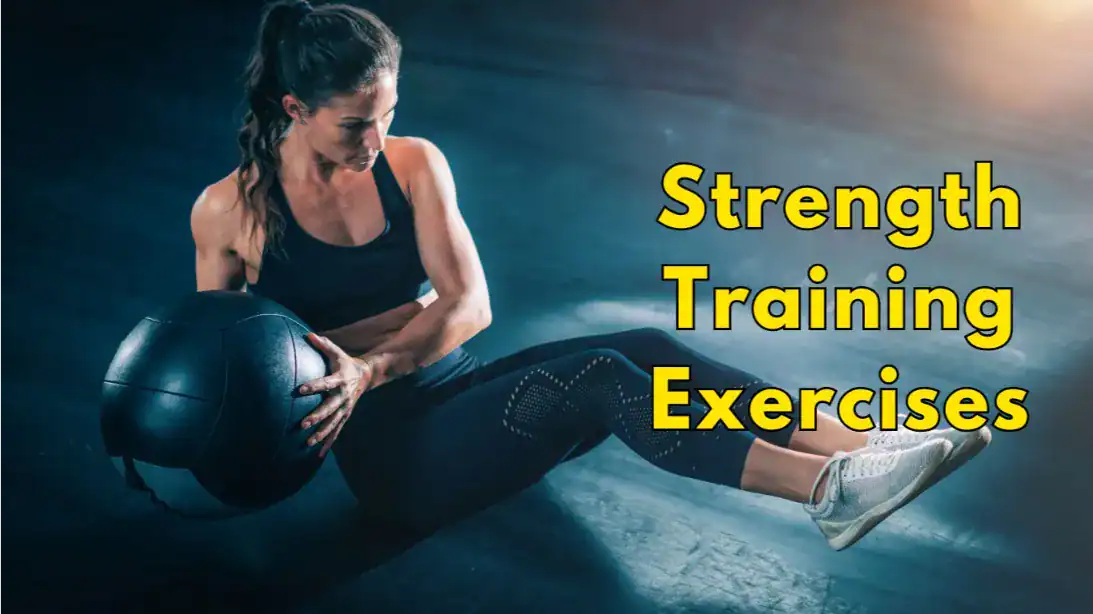Getting in shape isn’t rocket science. It’s sweat and consistency. It’s exercising when overwhelmed: showing up when your bed feels too warm and your muscles ache. Fitness doesn’t care about your excuses or how bad your day was. The body responds to what you do, not what you know or what you promise yourself at midnight on December 31st.
If you’re looking for real fitness tips that work, not the glossy magazine crap that sells dreams instead of results, you’ve found the right place. No sugar coating here. Just the raw truth about getting your body where you want it to be.
Key Takeaways
- Start Where You Are, Not Where You Wish You Were: Begin with manageable physical activity that builds momentum, not injuries.
- Consistency is King (and Queen): Showing up regularly for moderate exercise routines beats sporadic, heroic efforts every single time for long-term fitness success.
- Fuel the Machine Properly: You can’t sculpt a masterpiece out of junk. Real food fuels real results; nutrition is non-negotiable for weight loss and muscle building.
- Recovery Isn’t Weakness, It’s Strategy: Muscles rebuild and get stronger during rest. Prioritize sleep and listen to your body’s signals.
- Track Your Wins (Beyond the Scale): Monitor progress in strength, endurance, or how your clothes fit to stay motivated and adjust your workout plan.
- Find Your Flavor of Movement: The “best” exercise plan is the one you’ll actually stick with. Explore until you find activities you don’t actively dread.
The Unvarnished Truth About Getting Started
Forget the instant transformations. Getting fit is a process, often a slow one. The fitness world loves selling quick fixes, but lasting change is built brick by boring brick. It boils down to this: move more, eat better, rest adequately, and repeat. A lot.
Until climbing stairs doesn’t require a pit stop and you feel capable in your own skin.
Ditch the “All or Nothing” Mindset
The biggest mistake? Going from zero to hero overnight. Full throttle on day one often leads to burnout or injury by day seven. That’s not grit; it’s just dumb. Your body needs time to adapt.
Start small. Can you walk for 20 minutes without feeling like you wrestled a bear? Good, that’s your starting physical activity. Can you manage a few bodyweight squats with decent form? Excellent. Build from there. Your first few weeks of any new exercise routine should leave you feeling worked but energized, not utterly destroyed.
Remember, setting achievable goals is crucial for maintaining fitness motivation on this long fitness journey.
Finding Movement That Doesn’t Feel Like Punishment
If you hate every second of your workout, your willpower will eventually tap out. Find forms of exercise you can tolerate, or even—gasp—enjoy. Love music? Dance. Need to hit something? Try boxing. Prefer the outdoors? Hiking or running outside might be your jam. Enjoy lifting heavy things? Fantastic, strength training is fundamental. Explore different types of exercise:
- Aerobic exercises (like running, swimming, cycling) challenge your heart and lungs.
- Strength exercises (lifting weights, using resistance bands, bodyweight) build muscle mass and bone density.
- Flexibility work (stretching, yoga) keeps you mobile.
- Balance exercises improve stability.
Don’t force yourself into a box. The right activity level and type for you exists; you just have to find it. Maybe it’s a brisk walk listening to a podcast, joining an adult soccer league, or trying water aerobics.
That First Week Feeling (and Beyond)
Yeah, you’re going to be sore. Moving muscles you haven’t used in a while creates tiny tears (that’s how they get stronger). This Delayed Onset Muscle Soreness (DOMS) is normal. It’s the body’s “under construction” sign. Expect some discomfort – shortness of breath during aerobic activity, sweat, aching major muscle groups.
Learn the difference between this productive discomfort and sharp, actual pain. Pushing through the former builds resilience; ignoring the latter leads to injury. Understanding your initial fitness level helps manage expectations.
Workouts That Actually Work
The fitness industry complicates things to sell you stuff. But effective training is simple:
- Push things (push-ups, bench press)
- Pull things (rows, pull-ups)
- Pick things up (deadlifts, kettlebell swings)
- Carry heavy stuff (farmer’s walks)
- Move your own body (squats, lunges)
- Get your heart rate up (running, cycling, jumping)
Do these movements 3-4 times weekly. Get progressively stronger at them. Rest properly between sessions. That’s it.
Cardio and strength training shouldn’t be enemies. They complement each other perfectly when programmed intelligently. Strength training builds the muscle and metabolic capacity that makes cardio more effective, while cardio improves your work capacity and recovery ability.
The best program is the one you’ll actually follow. If you hate running but love swimming, swim. If you despise the gym but enjoy hiking, hike. Consistency trumps everything else.
Crafting Your Workout Plan

Once goals are set, a workout plan can be implemented. The key is to build a plan that works with your daily life, is balanced, and is adaptable to your progress and fitness adaptation.
Crafting Your Time-Efficient Workout Plan:
Warm-up (5 minutes): Dynamic stretches (arm circles, leg swings) to prepare your body.
Strength Training (20 minutes, 2-3 times per week): Focus on compound exercises for maximum impact.
Example:
Lower Body: Squats, Lunges, Glute Bridges
Upper Body: Push-ups (modified on knees if needed), Rows (using resistance bands or bodyweight)
Core: Plank, Bird Dog
Cardio (20 minutes, 2-3 times per week): Choose activities you enjoy and can fit into your day.
Example:
Brisk Walking during lunch break
Cycling to work (if feasible)
HIIT Workout (Bodyweight, 15 minutes)
Cool-Down (5 minutes): Static stretches (holding each stretch for 30 seconds) to improve flexibility.
Active Recovery: Opt for a walk or light yoga.
Check out our sample weekly gym workout routines for men over 40.
Sample Weekly Schedule:
Monday: Strength Training (20 mins)
Tuesday: Cardio (Walk during lunch or bike ride) (20 mins)
Wednesday: Rest or Active Recovery (yoga, light walk)
Thursday: Strength Training (20 mins)
Friday: Cardio (HIIT video at home)(20 mins)
Weekend: Outdoor activity (hiking, sports)
Rest and Recovery (essential for muscle growth and injury prevention): Don’t overtrain – listen to your body. Learn more about the importance of rest and recovery in fitness.
Diving Deeper: Strength Training

Strength training is the foundation for muscle building, overall strength, and even assists in weight loss by boosting your metabolism.
Key Strength Training Principles
- Progressive Overload: Gradually increase your weight, reps, or sets over time, to continually challenge your muscles.
- Proper Form: Focus on the correct form before increasing the load, to minimize the risk of injury. Check out our guide on how to avoid injuries while working out.
- Visualization Suggestion: A series of short animated videos showing the proper form for squats, deadlifts, and push-ups.
- Compound Exercises: Prioritize multi-joint exercises like squats, deadlifts, bench presses, and overhead presses for maximum muscle engagement and calorie burn.
- Isolation Exercises: Add single-joint exercises like bicep curls and tricep extensions to target specific muscles.
- Training Intensity: Use weights that challenge you, allowing you to complete the prescribed reps with good form.
- Training Adaptation: Your body will adapt, change your routine regularly to avoid plateaus.
- Workout Optimization: Optimize your time by being focused during workouts and avoid distractions.
Cardio Workouts: Essential for Heart Health and Fat Loss

Cardio is crucial for improving cardiovascular health, burning calories, and improving endurance.
Types of Cardio Training
- Low-Intensity Steady State (LISS): Longer duration, lower intensity (e.g., brisk walking, jogging). Great for beginners.
- High-Intensity Interval Training (HIIT): Short bursts of intense exercise, followed by brief rest periods. Excellent for calorie burning. Learn more about HIIT for fat burning workout success.
- Moderate-Intensity Continuous Exercise (MICE): Moderate intensity for a sustained period (e.g., cycling, swimming).
- Find activities that you enjoy so it feels less like work and you are more likely to stick to a consistent workout schedule.
Muscle Building and Body Conditioning
Muscle building is about breaking down muscle fibers and allowing them to rebuild stronger, while body conditioning is about working on your overall fitness.
Principles for Muscle Building
- Adequate Protein: Consume enough protein to rebuild and repair muscle tissue. Check out our guide on how to eat healthy for fitness.
- Caloric Surplus: If your goal is muscle gain, ensure you consume more calories than you burn.
- Progressive Overload: Increase the challenge as you get stronger.
- Proper Form: Always use proper form while lifting to avoid injury.
- Consistency: Stick with your workout schedule.
Weight Loss Exercises and Strategies
Weight loss is about creating a calorie deficit, burning more calories than you consume.
Effective Weight Loss Exercises
- High-Intensity Cardio: Burns calories quickly.
- Strength Training: Increases your metabolism by building muscle.
- Full-Body Workouts: Maximize calorie burn.
- Consistent Exercise: Consistency is key to weight loss. Explore our 7-day diet plan for weight loss.
Fitness Motivation, Consistency, and Progress
Staying motivated is a vital part of the fitness journey, and consistency will help you achieve your fitness success.
Staying Motivated
- Track your progress: Keeping a fitness log or journal is key to keeping you on track. Learn how to track your fitness progress effectively.
- Find a workout buddy: Help each other stay on track, or hire a personal trainer for accountability.
- Set realistic goals: You don’t have to start climbing mountains tomorrow, setting small obtainable goals will keep you motivated.
- Celebrate your success: Acknowledge how far you have come and reward yourself for making progress.
- Find activities you enjoy: Find workouts that are enjoyable so you look forward to them.
- Listen to Your Body: Rest when needed, never push yourself when you are tired or hurt.
The Recovery Nobody Talks About
Everyone wants to talk about the grind. About pushing through pain. That’s half the equation at best.Your muscles don’t grow when you train. They grow when you recover. Sleep 7-9 hours nightly. Your gains happen while you snore.
Stretching and mobility work aren’t optional extras. They’re the maintenance that keeps your body functioning. As you age, this becomes even more important. Stretching 101 isn’t just for yogis – it’s for anyone who wants to move well for decades to come.
Stress management isn’t some new age nonsense. Chronic stress releases cortisol that eats muscle and stores fat. Meditate, walk in nature, read, play with your dog — whatever lowers your stress is part of your fitness program.
Tracking Progress Without Obsession
What gets measured improves. But measuring the wrong things will drive you crazy.The scale lies. Water weight fluctuates 3-5 pounds daily. Judge progress by how your clothes fit, how you perform in workouts, and how you feel climbing stairs.
Take progress photos monthly, not daily. Your brain won’t register the small daily changes, but a month’s comparison will show what’s really happening.How to track your fitness progress has evolved beyond just using a scale. Measurements, performance metrics, energy levels, and other indicators give you a more complete picture of your transformation.
Avoiding Common Fitness Pitfalls
Most people fall into the same traps:
- Program hopping: Switching routines every two weeks because you’re not seeing instant abs. Give any solid program at least 8-12 weeks before judging it.
- Trying to spot reduce: You can’t tell your body where to lose fat. Your genetics determine fat loss patterns. The truth about belly fat food burners is that there’s no food or supplement that specifically targets stomach fat – fat loss happens across your entire body based on your individual genetics.
- Underestimating recovery needs: More is not better. Better is better. Sometimes the best workout is a good night’s sleep or an extra rest day.
- Comparison: Social media shows you everyone’s highlight reel. You’re comparing your beginning to someone else’s middle. Stay in your lane.
Making Fitness a Lifestyle
The “get in shape” mindset is the problem. It implies a temporary change for a temporary goal. What happens after?Instead, think about becoming someone who values movement and proper nutrition. Identity change outlasts motivation every time.
How to make fitness a part of your lifestyle isn’t about massive overhauls – it’s about small, consistent habits that accumulate over time. The people who succeed don’t have more willpower – they’ve just structured their environment to make fitness the path of least resistance.Find physical activities you genuinely enjoy. Walking the dog counts. Gardening counts. Sex definitely counts. Movement is movement.
Connect with others who share your values. Humans are tribal creatures. We do what our tribe does. Choose your tribe wisely.
Nutrition That Actually Works
Diet culture has made eating unnecessarily complicated. Here’s what works:
- Protein in every meal (0.8-1g per pound of bodyweight daily)
- Fruits and vegetables with most meals (aim for 5+ servings daily)
- Adequate healthy fats (olive oil, avocados, nuts)
- Carbs based on your activity level (more active = more carbs)
- Enough water (urine should be light yellow)
That’s it. No magic. No elimination of entire food groups unless you have medical reasons.
The essential guide to nutrition for fitness training breaks down exactly what your body needs to perform optimally and recover effectively. The basics haven’t changed, despite what the latest fad diet might suggest.
Healthy green smoothies can be a convenient way to pack nutrition into a busy day, especially when whole food meals aren’t possible. Just be mindful of total calories – liquid calories don’t register the same fullness signals as solid foods.
Staying Motivated When Life Gets Hard
Motivation is overrated. Discipline and systems beat motivation every time.Don’t rely on feeling like working out. You won’t feel like it most days. Do it anyway.Create systems that make fitness the default, not the exception. Sleep in your workout clothes if needed. Pack your gym bag the night before. Schedule workouts like important meetings you can’t skip.
How to stay motivated to work out isn’t about finding endless inspiration – it’s about designing your environment so that working out is easier than not working out. The people who succeed at long-term fitness make it the path of least resistance.
Remember why you started. Connect daily actions to your deeper reasons. Whether it’s being able to play with grandkids without getting winded or simply feeling confident in your skin, keep that why at the forefront.
The True Timeline of Results
Fitness results don’t follow the timeline of internet transformations. Real, sustainable change takes time:
- First 2 weeks: You feel different (more energy, better mood)
- First 4-6 weeks: You see different (clothes fit better, minor physical changes)
- First 8-12 weeks: Others notice the difference
- First 6-12 months: Major transformations become visible
This industry sells overnight transformations. That’s bullshit. How long to see weight loss results depends on many factors including your starting point, but understanding realistic timelines prevents the frustration that leads to quitting.The best transformations are the ones no one notices happening until one day, they can’t ignore them anymore.
Making It Last
Getting in shape is one thing. Staying there is another challenge entirely.
Make it sustainable. If you can’t imagine eating this way or moving this way a year from now, you won’t. Period.
Create habits that fit your life, not someone else’s Instagram fantasy. Find movement you enjoy enough to continue when motivation fades. Build nutrition patterns flexible enough to accommodate real life.
How to avoid injuries while working out becomes increasingly important the longer your fitness journey continues. Nothing derails progress like preventable injuries from poor form, inappropriate progression, or ignored warning signs from your body.
Start Today
Getting in shape isn’t about perfection. It’s about consistency. It’s showing up when you don’t want to. It’s making slightly better choices most of the time. The body you want is built through thousands of small decisions, not one heroic effort.
Start today with one change. Then add another tomorrow. That’s how real transformation happens – one step, one rep, one meal at a time.
References
- American College of Sports Medicine
- National Academy of Sports Medicine
- Harvard Health Publishing – Fitness
- Mayo Clinic – Fitness
- Centers for Disease Control and Prevention – Physical Activity
- www.mayoclinic.org, accessed on January 4, 2025, https://www.mayoclinic.org/healthy-lifestyle/fitness/in-depth/fitness/art-20048269
- Fitness for Beginners: A Step-by-Step Guide – OakBend Medical Center, accessed on January 4, 2025, https://oakbendmedcenter.org/2024/01/10/fitness-for-beginners-a-step-by-step-guide/
- A Beginner Workout Plan for Your First Week in the Gym – Planet Fitness, accessed on January 4, 2025, https://www.planetfitness.com/community/articles/beginner-workout-plan-your-first-week-gym
- 5 Tips to Help You Stay Motivated to Exercise | National Institute on Aging, accessed on January 4, 2025, https://www.nia.nih.gov/health/exercise-and-physical-activity/5-tips-help-you-stay-motivated-exercise
- Make Exercise a Habit, Not a Hassle: Simple Tips That Work | American Heart Association, accessed on January 4, 2025, https://www.heart.org/en/healthy-living/fitness/staying-motivated/make-exercise-a-habit
- 12 Tips to Help You Stick With Exercise – WebMD, accessed on January 4, 2025, https://www.webmd.com/men/stick-with-fitness-plan
- How to Stay Consistent When Beginning to Work Out – Verywell Health, accessed on January 4, 2025, https://www.verywellhealth.com/how-to-stay-consistent-with-working-out-8665913
- oakandironfitness.com, accessed on January 4, 2025, https://oakandironfitness.com/7-practical-tips-to-build-consistency-in-your-fitness-routine/
- www.nia.nih.gov, accessed on January 4, 2025, https://www.nia.nih.gov/health/exercise-and-physical-activity/four-types-exercise-and-physical-activity
Alexios Papaioannou
Mission: To strip away marketing hype through engineering-grade stress testing. Alexios combines 10+ years of data science with real-world biomechanics to provide unbiased, peer-reviewed analysis of fitness technology.
